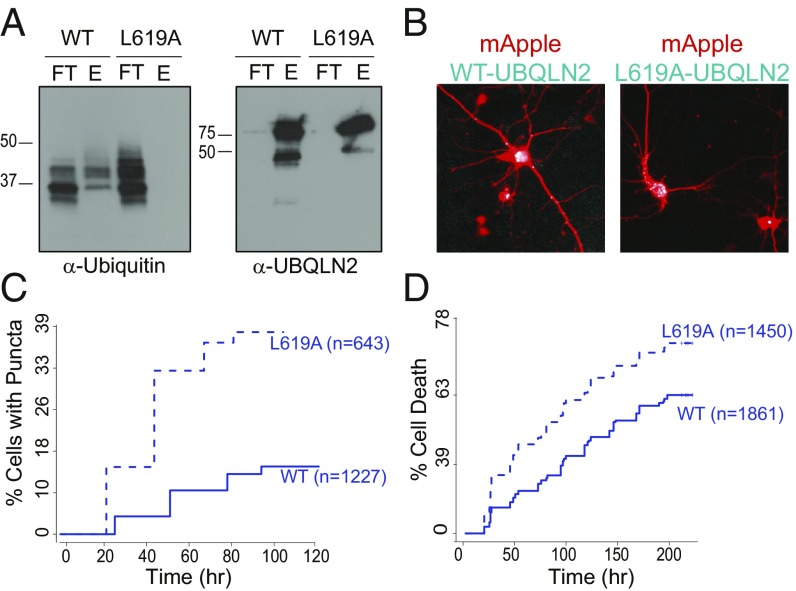Fig. 7.
The ubiquitin-binding deficient mutation, L619A, increases both puncta formation and toxicity in neurons. (A) Western blots showing the results of a pull-down experiment to assess L619A-UBQLN2 ubiquitin binding. Recombinant His-tagged WT or L619A-UBQLN2 was preincubated with poly-ubiquitin/Ub3-Ub7 WT chains (K48 linked) followed by a subsequent incubation with Ni-NTA agarose beads. The flow-through (FT) and the elution (E) were visualized on Western blots probed with α-UBQLN2 or α-ubiqutin antibodies. (B) Representative images of primary neurons cotransfected with either iRFP or iRFP-tagged L619A-UBQLN2 (blue) and mApple (red) on day 2 following transfection (magnification, 20×). (C) The percent of neurons that form puncta is significantly increased in L619A-UBQLN2 transfected neurons compared with WT. (hazard ratio = 3.09, P = 2E-16) Neurons were rank-ordered by expression level and stratified by expression quintile. (D) The cumulative risk of death is increased in L619A-UBQLN2–transfected neurons compared with WT (hazard ratio = 1.54, P = 2E-16). Neurons were rank-ordered by expression level and stratified by expression quintile.

